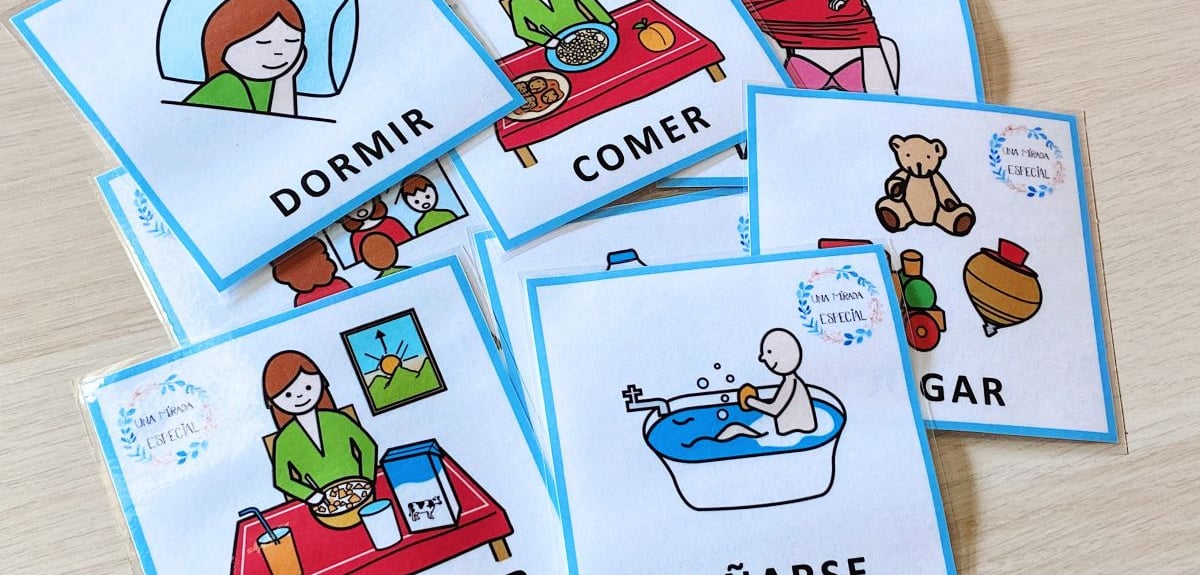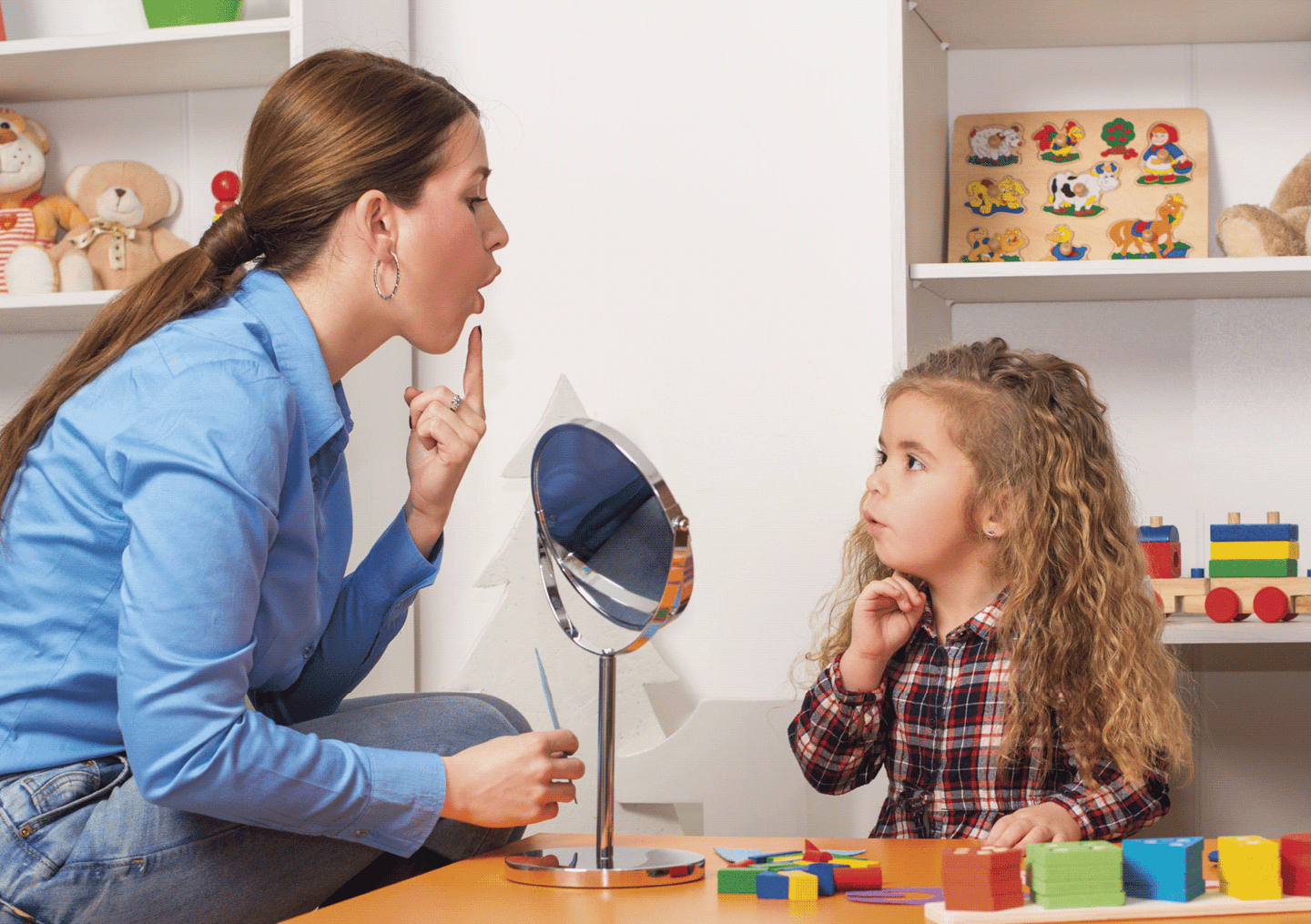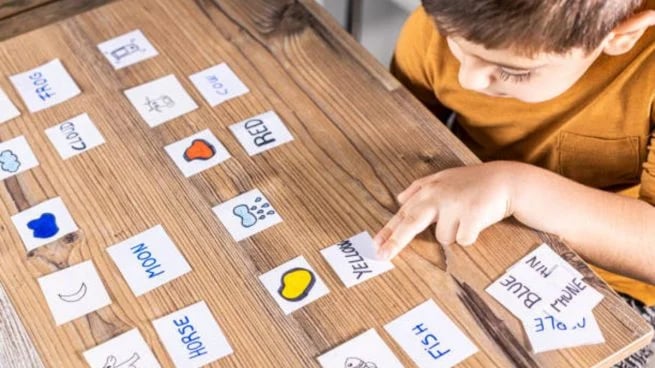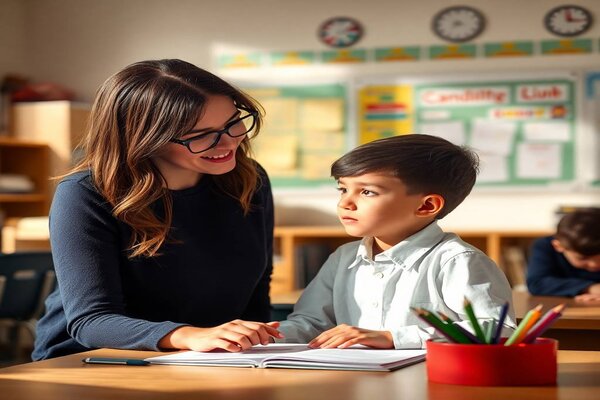🧠 Language and Communication in Autism: Understanding, Supporting, and Strengthening
At MiRutaTEA, we deeply believe in the value of every form of communication. That's why we developed this content to support families, professionals, and caregivers seeking to understand and support language development in individuals on the autism spectrum. We recognize that language is more than just speaking; it's also gesturing, pointing, gazing, touching, writing, using images, or technology. It's everything that allows us to express ourselves, connect, ask, share, understand, and be understood. For autism, language development can manifest in diverse ways. Some individuals with autism are fully verbal, others use few words, and many communicate through non-verbal means. There isn't a single way to communicate on the spectrum, so it's fundamental to stop measuring everyone by the same yardstick and, instead, learn to identify and empower each person's unique forms of expression.
Language development in autistic individuals can follow atypical trajectories. For example, a child might take longer to start speaking or develop a broad vocabulary but struggle with maintaining a conversation, interpreting irony, or using an appropriate tone. Echolalia can also occur, where the person repeats previously heard phrases (from an adult, a movie, or a song), not as an "error," but as a way to process or express something. Echolalia can be immediate (repeating what was just heard) or delayed (repeating something heard long ago). Supporting this phenomenon with empathy, instead of suppressing it, allows us to understand its function and transform that repetition into a door to dialogue. It's common for autistic individuals to need more time to process oral language, so it's essential to use clear, simple, paused language accompanied by gestures, images, or visual supports. Words shouldn't be fired off in bursts, but offered with intention, making eye contact, with the patience of someone who truly wishes to be understood. In that sense, augmentative and alternative communication (AAC) plays a central role.
AAC includes a variety of strategies and tools—like pictogram boards, electronic devices with voice output, sign language, natural gestures, and systems like PECS—that enable non-verbal or language-limited individuals to express themselves autonomously. At MiRutaTEA, we promote the early and respectful use of AAC as a communicative right, not as a "last resort." It's a very harmful myth to think that "if you give them pictograms, they won't speak." Evidence shows that using visual supports favors, rather than delays, the development of oral language. Giving a voice through images, technology, or gestures to a person who cannot express themselves verbally not only alleviates their frustration but opens doors to participation, play, learning, and relationships.
Another key point is understanding that language isn't built solely in structured therapeutic or educational settings. Communication develops in everyday moments: while playing, eating, getting dressed, walking, or laughing together. Every interaction can be an opportunity to name, describe, ask, answer, take turns, point, anticipate. Therefore, one of the pillars of our proposal is that adults—whether parents, teachers, or caregivers—become models of conscious communication. This involves speaking clearly, without overwhelming, adapting our language to the child's or young person's level of comprehension, but without underestimating them. It also involves observing, waiting, and listening. It's not just about speaking, but about creating a space where the other person can respond, in their own way, at their own pace.
For non-verbal children, for instance, sustained gazes, gestures, body movements, vocalizations, or even changes in breathing or emotional tone can be attempts to communicate. Validating these expressions—without forcing words—is a profound act of respect. If a child points to a cookie, you can say: "You want a cookie! It's yummy, isn't it?" and then give it to them. In that small act, you're recognizing their communicative intent, modeling language, and reinforcing that expressing oneself yields concrete results. Sometimes, adults focus on the child saying the exact word before accessing the desired object, which causes frustration. But if we invert the logic and prioritize intent over form, everything changes: first we validate the gesture, then we model the word, and over time, if the environment is safe and accessible, that word may appear.
For children with limited language, play can be a great tool to promote vocabulary expansion and the use of simple phrases. Picture dominoes, action cards, songs with gestures, puppets, bubbles, or turn-taking games help establish predictable communicative routines that encourage participation. Naming what's happening, pausing for the child to intervene, using familiar songs, and repeating key words are often effective strategies. Additionally, leveraging the child's specific interests (e.g., dinosaurs, trains, or bubbles) emotionally engages them with language, because no one wants to talk about what they're not interested in.
For individuals with fluent language, the challenge often lies in the pragmatic use of language: how to initiate a conversation, maintain it, interpret what others say, and respond coherently or emotionally appropriately. Often, language can be grammatically correct but functionally inadequate or socially mismatched. In such cases, working through role-playing, dramatization, question-and-answer games, or social stories helps train complex communicative skills, such as using intonation, interpreting metaphors, or reading others' emotions. This is where communication ceases to be a matter of words and becomes a dance between emotions, context, intention, and empathy.
At MiRutaTEA, we insist that there is no single valid linguistic goal. For some, it will be to develop functional oral language; for others, it will be to be able to point to an image and be understood. What matters is not the medium, but that the person has an effective, respected, and valued way to communicate, whatever it may be. Supporting this process requires eliminating prejudices, lowering rigid expectations, and embracing communicative diversity. Because what's at stake is not just "whether they speak or not," but whether they can say how they feel, if they can express what they want, if they can convey pain or joy, if they can participate in their environment and be an active part of their community.
Inclusive environments are not built solely with physical ramps, but also with communicative ramps. Adapting materials, using visual supports, training teachers, including interpreters if necessary, allowing more time to respond, avoiding constant corrections, and offering clear language models are some ways to guarantee the right to communication in any context. This is not a luxury or "special attention": it is a basic human right. The International Convention on the Rights of Persons with Disabilities clearly states: every person has the right to express their opinion and be heard, on an equal basis.
That's why at MiRutaTEA, we work with families, schools, and professionals to provide practical resources, accessible strategies, and visual tools that can be applied in daily life. We support through play, empathy, and active listening. We don't offer magic formulas, but possible paths. Paths that stem from the understanding that every child, youth, or adult with autism has a unique communicative potential, and that this potential flourishes when the environment stops demanding they adapt and begins to adapt to them.
We want every family to know they are not alone. That there are ways to communicate even when there are no words. That love, patience, observation, and creativity are powerful allies. That playing, singing, imitating, waiting, listening, and laughing together is more valuable than any artificial stimulus. And that, step by step, gesture by gesture, word by word, a true bridge to communication can be built. Because speaking is not the same as communicating, and communicating does not always need words.
From MiRutaTEA, we remain committed to this journey. Because every child has the right to be heard. And because behind every gaze, every signal, every gesture, there is a voice that deserves to be understood.


What is Communication in Autism?
Communication in autism is an essential aspect that deeply influences the development, autonomy, and quality of life for those on the spectrum. Unlike traditional developmental models, where language and communication progress predictably, in autistic individuals, they can present uniquely, diversely, and often atypically. This doesn't mean an absence of communication, but rather the presence of other forms of expression that need to be recognized, respected, and strengthened.
Communication encompasses much more than just speech. It also includes gestures, gazes, body movements, facial expressions, voice intonation, the use of silence, and in many cases, supports like images, electronic devices, or sign language. For many autistic individuals, these forms are their primary or most comfortable way of relating to the world. Some people develop fluent verbal language but may struggle to use it socially effectively. Other individuals don't develop oral language, but that doesn't mean they have nothing to say. All people communicate, and it's the environment's responsibility to find the right channel to facilitate that expression.
Within autism, one of the central challenges can be the comprehension of oral language, both in terms of words and intonation, double meanings, metaphors, or jokes. This leads to misunderstandings, frustrations, and even social withdrawal if the environment isn't sensitized. Additionally, there can be difficulties organizing and expressing thoughts, asking questions, initiating or maintaining a conversation, or interpreting others' body language. This doesn't imply a lack of interest in communicating, but a different way of processing information and connecting with others.
In many cases, autistic individuals use what is known as echolalia, meaning they repeat previously heard phrases or fragments. These repetitions, far from being a mere empty echo, often serve a purpose: they can be a way to learn linguistic structures, to self-soothe, to express something they can't say otherwise, or even to respond emotionally to a situation. Understanding the meaning behind echolalia requires time, observation, and sensitivity, but by doing so, valuable doors to authentic communication are discovered.
It's also important to note that some individuals on the spectrum may have an extensive vocabulary and speak with grammatical correctness but present difficulties adjusting their language to the context, reading social cues, or following turns in a conversation. This is known as a difficulty with language pragmatics, and it's often one of the most subtle yet significant challenges for verbal autistic individuals.
Communication in autism must be seen as a right, not a luxury. All people, regardless of age, language level, or cognitive style, must have access to functional and respectful means to express themselves, be heard, and actively participate in their environment. And for that to happen, society must broaden its idea of what "communication" is.
Therefore, from MiRutaTEA, we promote an inclusive and empathetic vision of communication. We believe that, beyond words, what truly transforms is the bond. Listening without pressure, observing without judgment, offering without imposing, and celebrating every communicative attempt as an act of bravery are fundamental steps to help autistic individuals unfold their voice, whatever its form.




🧩 Practical Solutions
Supporting the communicative needs of an autistic person requires a compassionate perspective, concrete strategies, and, above all, an open attitude towards mutual learning. It's not about forcing oral language or fitting the person into predefined molds. It's about creating environments that facilitate genuine expression, recognizing and validating multiple forms of communication.
A key tool in this process is Augmentative and Alternative Communication (AAC) Systems. These systems include all types of strategies and technologies that allow a person to communicate when oral language is insufficient or absent. Among the most common AACs are pictogram boards, communication notebooks, interactive apps like Proloquo2Go, voice output devices, natural gestures, the use of sign language, or even Picture Exchange Communication Systems (PECS).
AACs not only provide an effective way to communicate but also promote autonomy, reduce frustration, and foster inclusion. Far from hindering speech development, as is mistakenly believed, they often stimulate it. This is because by releasing the emotional burden of not being able to express oneself, the person can relax and explore oral language with more confidence if it's within their capabilities. The key is to start with these systems as early as possible, without waiting for the absence of speech to become an obstacle.
Another valuable resource is the use of visual materials. Autistic individuals often process visual information better than auditory. Therefore, using pictograms, picture cards, visual schedules, step-by-step sequences, or social stories helps anticipate situations, understand instructions, reduce anxiety, and facilitate expression. These supports can be used at home, at school, or in the community, and should be adapted to each person's age, interests, and comprehension level.
Play is another powerful way to stimulate communication. Not just any play, but one that stems from the child's interest and becomes a space for genuine connection. Turn-taking games, songs with gestures, symbolic play with dolls, or dramatizations with puppets can help model language structures, increase vocabulary, foster exchange, and work on conversational skills. The most important thing is that the adult doesn't direct the play from their own goals, but rather immerses themselves in the child's world, validating their choices, repeating their actions, and offering words and gestures that provide support.
Finally, the support of speech-language pathologists and language therapists specialized in autism is fundamental. These professionals can conduct functional language evaluations, design personalized intervention plans, train in the use of AAC, and work collaboratively with family and school to ensure consistent and effective intervention. It's not just about "making them talk," but about building real communication.
At MiRutaTEA, we believe that everyone has something to say. That no child should grow up without a voice. And that voice can be in a word, in an image, in a gesture, in a glance. Our task as adults is to learn to read it, respond to it, and celebrate it. Because communicating isn't just speaking. It's connecting. It's being seen. It's belonging.
And on that journey, we are here to support you.
🔍 Common Difficulties
Discussing communicative difficulties in autism doesn't mean focusing on limitations, but rather understanding the real challenges many individuals on the spectrum face to generate appropriate supports, accessible environments, and more human connections. These difficulties can manifest in different ways and with varying degrees of intensity depending on the person. Not all children, youth, or adults with autism present the same characteristics, but there are some common patterns worth knowing.
One of the most visible difficulties is the delay in oral language development. While some children start speaking later than expected, others may not develop verbal language at all. This doesn't mean they have nothing to communicate, but that they need alternative ways to express themselves. When the environment insists solely on speech as a valid means, without considering other channels, it creates an experience of frustration, isolation, and devaluation.
Another common difficulty is echolalia, which can be immediate (repeating what was just heard) or delayed (repeating phrases heard days, weeks, or months earlier). Although it may seem mechanical or meaningless behavior, echolalia often serves important communicative functions: requesting something, self-soothing, expressing something they can't say otherwise, or even responding emotionally to a situation. It's crucial not to suppress echolalia, but to understand its function and transform it into an opportunity to model new forms of communication.
Many children and adolescents with autism present difficulties initiating or sustaining a conversation, even when they have verbal language. This can be due to a combination of factors: social anxiety, unfamiliarity with implicit conversational rules, difficulties in speech planning, or limited flexibility to change topics. In these cases, interactions can become unidirectional (e.g., talking only about their topic of interest) or very brief, which can limit socialization opportunities.
Another frequent challenge is the difficulty using and understanding non-verbal language. Facial expressions, gestures, tone of voice, gazes, and body language in general are often important social cues in any interaction. For many autistic individuals, these signals can be confusing, irrelevant, or even overstimulating. Sometimes, they may maintain little eye contact, use fewer gestures, or have facial expressions that don't match their emotional state. Far from interpreting it as disinterest, it's fundamental to understand it as a different way of being in the world.
These communicative difficulties don't occur in isolation. They often intertwine with sensory, emotional, and cognitive aspects that are also part of the autism spectrum. For example, a person who is easily overwhelmed by sounds may have more difficulty processing what is said in a noisy environment. Or a child with social anxiety may avoid verbal interactions due to fear of error or rejection. Understanding these connections is vital for designing truly effective supports.
For all these reasons, it's key to stop measuring communication solely by oral language. Not speaking is not the same as not communicating. And speaking a lot doesn't necessarily mean there's functional communication. What matters is that the person can express desires, needs, ideas, emotions, and questions effectively, safely, and respectfully. That is communication.
From MiRutaTEA, we invite educators, professionals, and families to look beyond the obvious. To identify the unique ways each person communicates. To celebrate the intention behind every gesture. Because only when we stop imposing a single valid way of speaking, do we truly begin to listen.


🧒 Recommendations by Language Level for Children with ASD
💡 Understanding each child's communication level within the Autism Spectrum Disorder (ASD) is a fundamental tool for offering adequate, personalized, and affective supports that foster their comprehensive development. Not all children on the spectrum communicate in the same way, and their needs change over time. Some individuals may not use words to communicate, others may employ limited language, and some may speak fluently but present challenges in social comprehension. Therefore, it's essential to understand these differences, observe with empathy, and apply specific strategies that support their strengths and respect their unique communicative style. Below, we offer a set of recommendations organized by language levels that can be applied at home, in the classroom, or in therapeutic contexts, helping to establish strong bonds, promote autonomy, and facilitate social interaction with respect and inclusion.
Children who do not use spoken words to communicate, but find other ways to express their needs, emotions, and thoughts through gestures, sounds, gazes, body movements, pictures, or objects.
✅ Recommendations:
It's essential to understand that the absence of verbal language doesn't mean an absence of communication. These children have enormous expressive potential that can manifest in ways different from traditional ones. Using Augmentative and Alternative Communication (AAC) systems, such as PECS (Picture Exchange Communication System), is highly effective in facilitating information exchange. With PECS, the child learns to hand an image to their conversational partner to communicate desires or needs, which can bring great emotional relief and reduce frustration-driven behaviors.
Additionally, it's recommended to incorporate natural gestures (like pointing, raising arms to be picked up, or showing a palm to stop) and clear, exaggerated facial expressions that accompany daily routines. These gestures should be repeated in functional contexts so the child associates meaning with action.
The use of real, tangible objects—for example, showing the water glass instead of just saying the word—allows for greater comprehension, especially when combined with visual support in the form of photos or pictograms. Visual schedules (sequences of images anticipating the day's activities) not only organize time but also reduce anxiety by allowing the child to understand what will happen.
It's crucial to reinforce any communication attempt, even the most subtle ones, like a sustained gaze, a spontaneous vocalization, a body movement, or simply choosing between two objects. Every gesture deserves to be recognized, celebrated, and modeled with an appropriate response. By doing so, we are teaching the child that their form of expression has value and that others are attentive to their needs.
Adults should be available, patient, and emotionally attuned. Playing face-to-face, establishing eye contact when possible without forcing, imitating their gestures or sounds, and waiting for their response are ways to validate their active participation. It's not about "making them talk," but about creating two-way channels that build a solid foundation for future communicative abilities.
Children who use some single words, short phrases, or basic expressions to communicate, but still require constant support to expand their vocabulary, better structure their speech, and understand complex instructions.
✅ Recommendations:
For children at this level, it's vital to create language-rich environments, where words are always present in context and associated with real actions. Speaking in brief, clear, and concrete phrases helps the child better understand what is being said. Phrases like "let's eat," "open the door," or "give me the car" should be accompanied by gestures, objects, or images that reinforce their meaning.
An excellent strategy is the use of permanent visual supports: picture cards, pictograms, family photos, or illustrated sequences. These elements help the child comprehend and anticipate what will happen, while also offering them resources to communicate. For example, when offering a choice between two drinks, you can present the image of juice and water while asking "Do you want juice or water?" in a slow voice and pointing to each one.
Repeating keywords during play, meals, or routines helps consolidate vocabulary. If the child says "bread," the adult can expand by saying "yes, warm bread," "the bread is tasty," or "you want more bread." This language modeling without direct correction allows the child to hear new structures without feeling pressured.
Simple songs with repetitive movements—like "Old MacDonald" or "Twinkle, Twinkle Little Star"—are valuable allies. They combine rhythm, repetition, and action, which facilitates memorization, stimulates verbal and gestural imitation, and creates moments of shared enjoyment. Stories with large illustrations and short sentences are also recommended for working on joint attention and using language in context.
Finally, it's important to remember that every word the child manages to say is a great achievement. Therefore, their attempts should be reinforced with genuine enthusiasm, affectionate contact, and a pressure-free environment. Interaction should be a shared game, not a compulsory task.
Children who already express themselves verbally with complete sentences, but may present difficulties in social communication, pragmatic language, using metaphors, or interpreting emotions and contexts.
✅ Recommendations:
At this level, the goal is no longer just for the child to speak, but for them to use language to interact, understand social rules, regulate their emotions, and actively participate in different environments. Therefore, interventions should focus on functional and social communicative skills, with strategies that strengthen understanding of others, empathy, and conversational flexibility.
Teaching turn-taking through games, group activities, or simply structured conversation is key. Using phrases like "I'm talking now," "now I'm listening," or "wait your turn" helps the child understand how a verbal exchange is organized. Turn-taking cards or balls passed from hand to hand can represent who speaks.
Role-playing games are excellent tools for simulating everyday situations (going to the doctor, shopping, preparing a snack) where the child can practice greetings, goodbyes, requests, and emotional expressions. These games foster creativity, but also perspective-taking, by putting oneself in another character's shoes.
Reading stories together and asking questions about what happens in the story—"Why did the character cry?", "What if...?"—develops inferential comprehension, the use of verb tenses, and the expression of one's own ideas. It's also useful to pause videos or cartoons to analyze what characters feel, why they get angry, what they could have done differently. This type of conversation strengthens emotional literacy and social reflection.
Another important recommendation is to introduce new concepts and words through images, real examples, or concrete situations. For example, if you want to teach the word "responsibility," you can say "When you put away your toys, you're being responsible," accompanied by an image that reinforces the action. This facilitates the comprehension of abstract terms that are often difficult on the spectrum.
At all times, it's essential to validate what the child expresses, correct with respect if necessary, and encourage them to continue communicating. Fostering a positive environment where language is not a demand but a tool to connect with others makes a difference in their communicative and emotional development.






🔴 1. Non-Verbal Level
🟡 2. Limited Language Level
🟢 3. Fluent Language Level
🧠 Remember!
Not all children follow the same path. What's important is to respect their pace, use visual aids, and positively reinforce every step forward, no matter how small.
🧩 Free Resource for Families and Professionals
We're gifting you a PDF activity kit, ideal for children with Autism Spectrum Disorder (ASD). It includes cutout cards, games to stimulate attention, coloring activities, playful dynamics, and much more.
📚 This material has been compiled from various autism communities with the goal of sharing, supporting, and enriching learning through love and inclusion.
💖 Download it for free and start enjoying it today!
📥
Are you a Professional or Do You Provide Services Related to ASD?
At MiRutaTEA, we're developing a new section where therapeutic companions, psychologists, speech therapists, psychopedagogues, specialized teachers, and other professionals can showcase their services through our app and website.
🧩 What Will You Be Able to Offer?
Therapeutic services, school support, or stimulation.
Workshops, group activities, or intervention proposals.
Links to your social media or professional website.
Contact information so families can easily find you.
💙 How to Join?
We'll soon launch a low-cost monthly subscription system so you can be part of our community. In the meantime, you can complete the contact form and tell us about your work.
🚀 Join a Network Designed to Connect Families with Professionals Committed to the Inclusion and Well-being of Individuals with ASD.
🔗 One Click Makes a Difference
Follow us on social media and help us reach more families with information about autism and alternative communication.
📲 Your support means a lot! 👇
💙 At MiRutaTea, we believe in the power of every voice.
Your experience can support, inspire, and help someone feel less alone.
🧩 Click the button and join the blog: read, share, and be part of the conversation.
This space is yours too.
